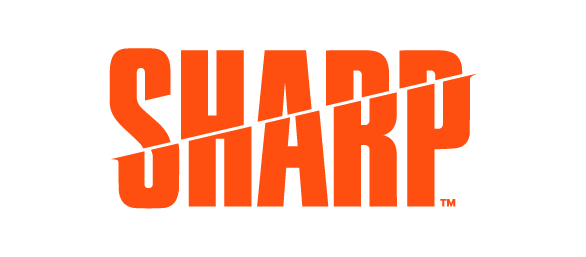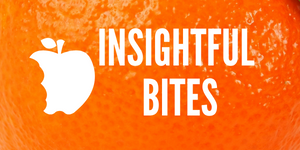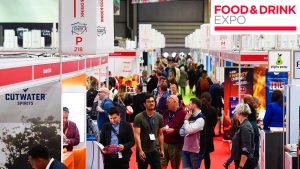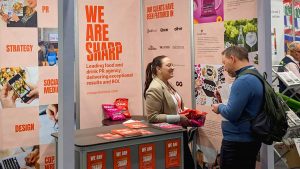Issue 13 of Insightful Bites is here, to get your teeth into!
Each month, the Sharp Relations team saves you time by collating the latest trends and insights from the hottest topics in the world of food and drink.
From what the retail buyers are looking for when it comes to sustainable credentials to shopper behaviour to communicating your carbon emissions with confidence, this month we’re serving up our edit of the best bits from Bread & Jam’s Future Summit.
Communicating your carbon emissions with confidence
We’re all familiar with terms such as ‘Net Zero’ and ‘Climate Positive’ but before you use them to communicate emissions goals do you know what they really mean?
For food and drink brands looking to engage with retailers and consumers effectively, understanding the nitty gritty of how you communicate your emissions goals is paramount. The multiples are asking for net zero emission targets, so brands really need to be on the front-foot here.
The below panel de-mystified some of the sustainability jargon on stage:
- Karina Sudenyte – Flawsome Drinks
- Heather Lynch – Oddbox
- Mari Haughty – Pip & Nut
- Amirah Jiwa (chair)
- Net Zero – reducing company emissions from the entire supply chain to 0%.
- Climate Positive – you are actively removing more CO2 than you emit.
- Green hushing – the fear of making any Net Zero claims in case that you’re accused of green washing. Fact: there’s been a 950% increase in people googling “green hushing” in the last year.
- Degrowth rather than green growth – sometimes there is a case for not continuing to grow, at the expense of the ethical implications.
Top Tip: Check out various sources when gathering your data, including the Defra website, to give you an idea of where your emissions are coming from.
Understanding shoppers and sustainability
Sara Reid from Kantar Insights shared some invaluable insights into shopper behaviour when it comes to sustainability considerations.
Shoppers broadly fall into three categories:
- Eco Actives – on the decline for the first time in 3 years. Many are struggling due to cost-of-living crisis – they are shopping less often and spending less.
- Eco Considerers
- Eco Dismissers
Some of the challenges to being a sustainable consumer include:
- Affordability v sustainability – why is it difficult for the people who are really bought into sustainability to be able to access it?
- Sustainable brands are having to work harder to appeal to shoppers – only 2 of the top 10 larger brands are trading with the eco-actives when they should be leading the charge.
- Price – top 10 eco brands have an average price index of £175.
- Perceptions – all companies care about profits and eco-claims are just another marketing tool – 53% (there’s high scepticism in shoppers – over half – showing the communication isn’t punching through).
Opportunities for connecting with the consumer:
- Packaging is key:
- 70% of people try to buy environmentally friendly packaging.
- 25% of people regularly avoid plastic packaging.
- 45% of people want to do more (worth £57bn).
- Better messaging – to improve market penetration. Quality messages need to sit alongside sustainable ones.
- The following are among the top drivers of moving a consumer from intention to action:
- 30% plastic motivated
- 27% locally made
- 26% animal welfare stamps on pack
- 25% natural ingredients
- 24% fewer harsh chemicals
- 20% biodegradable packaging
- Perceptions:
- 45% better for the environment
- 66% want to support local producers
- Issues
- Deforestation and single-use plastic are key in the shopper understanding of carbon footprint. But they are much less aware of meat consumption and water use.
- Some questions to consider:
- Will your sustainable proposition stand up to increased value scrutiny?
- Are you making enough of your sustainable credentials?
- Do you understand the barriers that create the value-action gap in your category?
- How can you fight the sentiment that a sustainable choice has to be a compromise (values, price, convenience)?
What’s the buyer’s perspective on sustainability and its impact on sales?
Panel:
- Adrian Boswell – Selfridges
- Sophie Davies – Planet Organic
- Eleanor Pinfield – Co-op (incubator scheme – The Apiary)
- Andrew Allen (Chair)
Updates from Adrian from Selfridges:
- Selfridges’ approach to what sustainability means for Selfridges involves a 360 view via their bold sustainability strategy Project Earth where they look at every area of the business. They prioritise plant-based (rather than vegan); local and British made; how you put back into the economy; social enterprises etc.
- Sustainability does demand a premium price…. at least in the short term. In the longer term, it will become the norm, and everything will start to balance out.
- Simplify your message – there’s only so much information you can put on a piece of packaging.
- What really works is activations in store and it comes back to simplicity.
- Does being a B Corp make a difference to customers? No. B Corps is very B2B. It takes a lot of time and a lot of effort, however, if it helps then go for it.
Sophie from Planet Organic:
- 70% of the range is organic, always on the hunt for the really good mission led challenger brands.
- Simplicity is key – what is the one mission that you are so proud of that you want to get across? Is it packaging, food waste, food miles? Pick one message and communicate it really well. Know it and own it.
- Customer expectations are much bigger now. You have to know it and own it.
- We’re not B Corps but I am impressed by them – balances purpose over profit. Organic certification, it is impressive but it’s really challenging.
- Its key to demonstrate that you’re continuously challenging yourselves internally, how can we be better and how can we do better?
Ellie from Co-op :
- The goal for us is to be net zero by 2025.
- Its increasingly difficult to access funding for businesses who aren’t doing sustainability properly – always looking for those that cut-through.
- B Corps feels like an eco-chamber. What is important to customers? Are buyers and producers all talking one language but do customers care?
- We don’t need brands to have all the answers – we need them to be asking the right questions.
- Co-op has a Value Chain team. They ask themselves what can we do to make your life easier? Why are there lots of people extra in the supply chain, why are we asking you to pack in 6 packs rather than 12-packs? Saying to the supplier – what are we doing that’s making life ridiculous and difficult for you?
- You need BRC or SALSA as a minimum – can signpost people to the right places to get this done.
- Cost of Living Crisis means that customers are focused on the “at home” experience rather than going out. So, they’re seeing good growth.
If you loved this, then please do read all the latest news from Sharp HQ here. We exist to help the ‘good’ brands to grow. You’re welcome to book a call with one of our team to find out more.




